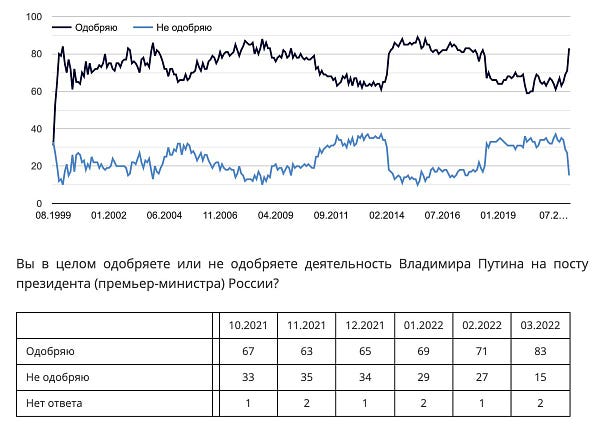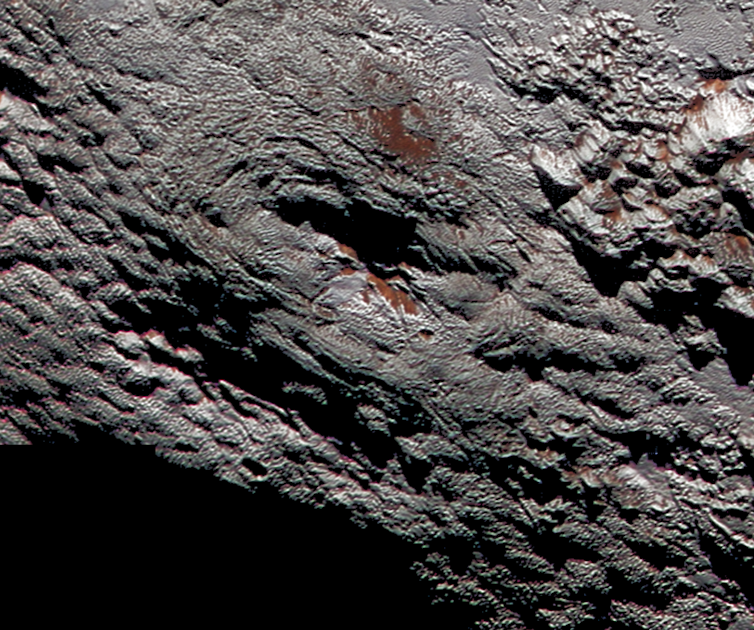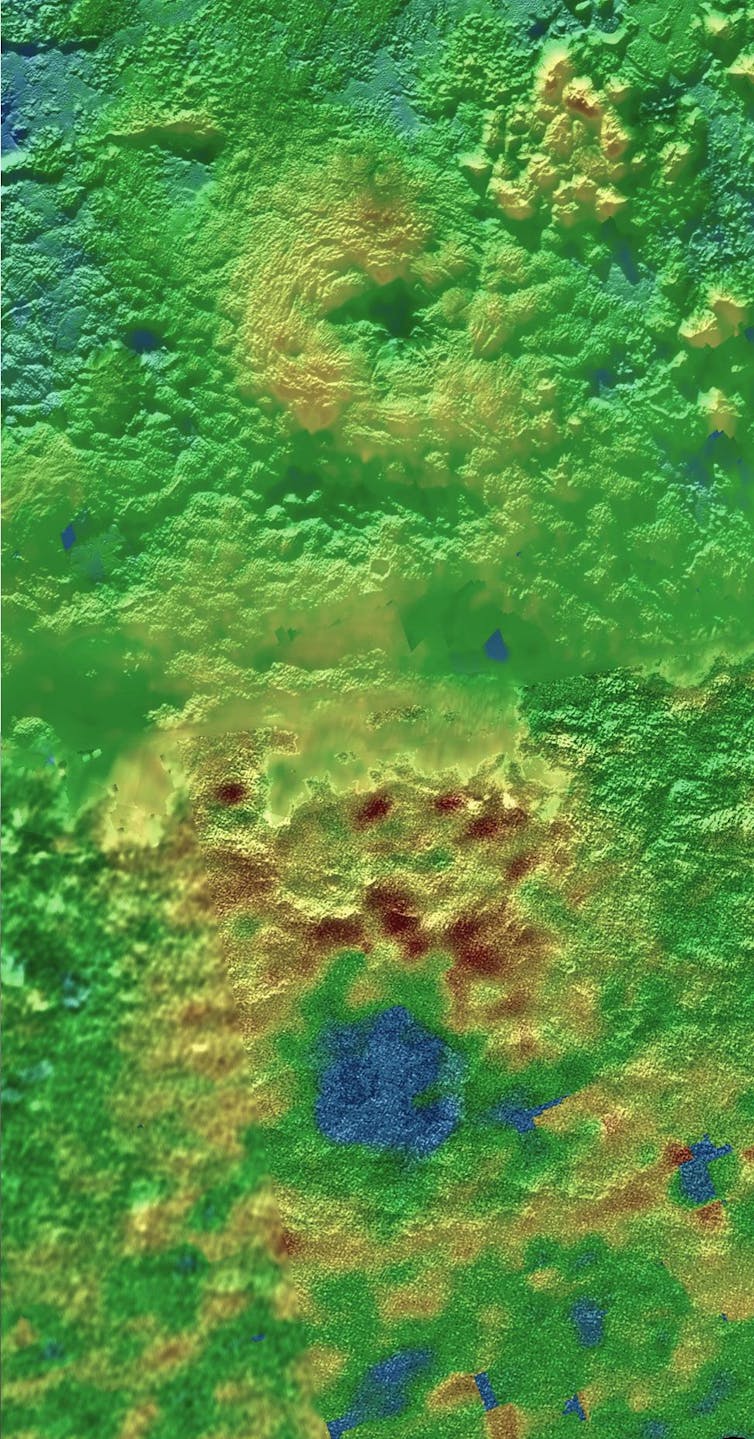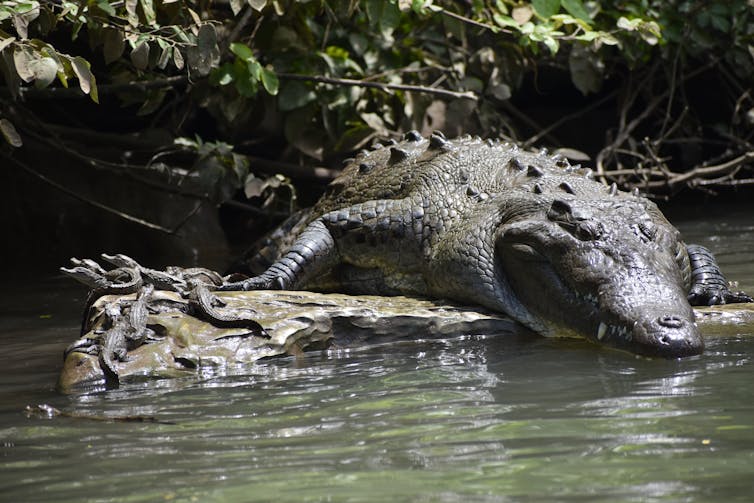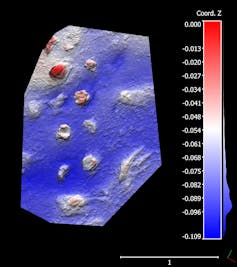Pending security pact would give China naval and police access to Pacific nation in Australia and New Zealand’s backyard
By NATE FISCHLER
MARCH 30, 2022

Children look out to sea from the Red Beach landing site near Honiara in the Solomon Islands in a file photo. Photo: AFP / Torsten Blackwood
A draft security agreement between the Solomon Islands and China was leaked on social media last Thursday and has been confirmed as authentic by South Pacific island nation.
The key points of the leaked draft agreement include permitting Chinese PLA Navy ships to dock and stopover in the country and carry out logistical operations. It also allows unfettered access to Chinese military police.
While sparking protest from Australia and New Zealand, Solomon Islands Prime Minister Manasseh Sogavare has defiantly stood by his government’s initiative, saying Tuesday in a speech to the country’s parliament in the nation’s capital of Honiara that the deal is almost ready to sign.
Sogavore also accused the West of sowing discord and instability in the region amid the backlash and has insisted that diversification of security partners is both a sovereign right as well as a positive development for the country traditionally considered in Australia’s sphere of influence. In addition to security considerations, Beijing has also offered substantial infrastructure investment in the country.
Nearby Australia and New Zealand, meanwhile, have expressed grave concern about the soon-to-be-finalized security arrangement. Australian Prime Minister Scott Morrison has pressured the Solomon Islands not to sign the deal and has lobbied neighboring Papua New Guinea and Fiji to do the same.
At the same time, New Zealand Prime Minister Jacinda Ardern has warned of militarization of the region as a consequence of China moving in while also adding that she sees “very little reason in terms of the Pacific security for such a need and such a presence.”
For their part, China has said that “Relevant countries should earnestly respect the Solomon Islands’ sovereignty and independent decisions instead of deciding what others should and should not do self-importantly and condescendingly from a privileged position,” through Foreign Ministry spokesperson Wang Wenbin, who added that any attempt to undermine the bilateral agreement by third parties and outside forces would be “doomed to fail.”
If fully implemented, the draft deal would allow for Chinese warships to be stationed around 1,600 kilometers off the coast of Australia. As Australian vessels also resupply in the Solomon Islands, the possibility of the two navies encountering each other in the country looms large.
Analysts note China already has the military capability to strike northern Australia with long-range ballistic missiles from their militarized artificial islands in the South China Sea, some 3,500 kilometers away.
The draft agreement in practice would allow for the deployment of Chinese military assets to the Solomon Islands to “protect the safety of Chinese personnel and major projects in [the] Solomon Islands.” It further allows for the Solomon Islands to request that China “send police, armed police, military personnel and other law enforcement and armed forces” to the country.
A draft security agreement between the Solomon Islands and China was leaked on social media last Thursday and has been confirmed as authentic by South Pacific island nation.
The key points of the leaked draft agreement include permitting Chinese PLA Navy ships to dock and stopover in the country and carry out logistical operations. It also allows unfettered access to Chinese military police.
While sparking protest from Australia and New Zealand, Solomon Islands Prime Minister Manasseh Sogavare has defiantly stood by his government’s initiative, saying Tuesday in a speech to the country’s parliament in the nation’s capital of Honiara that the deal is almost ready to sign.
Sogavore also accused the West of sowing discord and instability in the region amid the backlash and has insisted that diversification of security partners is both a sovereign right as well as a positive development for the country traditionally considered in Australia’s sphere of influence. In addition to security considerations, Beijing has also offered substantial infrastructure investment in the country.
Nearby Australia and New Zealand, meanwhile, have expressed grave concern about the soon-to-be-finalized security arrangement. Australian Prime Minister Scott Morrison has pressured the Solomon Islands not to sign the deal and has lobbied neighboring Papua New Guinea and Fiji to do the same.
At the same time, New Zealand Prime Minister Jacinda Ardern has warned of militarization of the region as a consequence of China moving in while also adding that she sees “very little reason in terms of the Pacific security for such a need and such a presence.”
For their part, China has said that “Relevant countries should earnestly respect the Solomon Islands’ sovereignty and independent decisions instead of deciding what others should and should not do self-importantly and condescendingly from a privileged position,” through Foreign Ministry spokesperson Wang Wenbin, who added that any attempt to undermine the bilateral agreement by third parties and outside forces would be “doomed to fail.”
If fully implemented, the draft deal would allow for Chinese warships to be stationed around 1,600 kilometers off the coast of Australia. As Australian vessels also resupply in the Solomon Islands, the possibility of the two navies encountering each other in the country looms large.
Analysts note China already has the military capability to strike northern Australia with long-range ballistic missiles from their militarized artificial islands in the South China Sea, some 3,500 kilometers away.
The draft agreement in practice would allow for the deployment of Chinese military assets to the Solomon Islands to “protect the safety of Chinese personnel and major projects in [the] Solomon Islands.” It further allows for the Solomon Islands to request that China “send police, armed police, military personnel and other law enforcement and armed forces” to the country.

Solomon Islands Prime Minister Manasseh Sogavare, left, and Chinese Premier Li Keqiang, right, watch Foreign Minister Jeremiah Manele sign an agreement with China State Councillor and Foreign Minister Wang Yi in Beijing in 2019.
Photo: AFP / Thomas Peter
Moreover, it remains vague as to both what type of military personnel may be sent to the Solomon Islands as well as what kind of operations the PLA and Chinese police may undertake there, leaving the door open for speculation and worry in neighboring Australia and New Zealand who regard the Solomon Islands as being in their “backyard.”
Meanwhile, Solomon Islands government Chief of Staff Robson Djokovic emphasized that the agreement is still in draft form and is not yet signed while also urging caution when publishing information about the draft agreement as it is considered a sensitive national and regional security issue. Sogavare made similar remarks to parliament is his speech on Tuesday.
The draft agreement has also sparked widespread speculation that the Solomon Islands could easily turn into a Chinese military base. Sogavare countered this speculation by blasting criticism of his government’s policies.
“We are not pressured in any way by our new friends, and there is no intention whatsoever to ask China to build a military base in the Solomon Islands,” he said. In his first comments since the revelation that a security agreement is in the works, Sogavare added that the backlash from Australia, New Zealand and the United States is “very insulting” and “nonsense.”
Australian Home Affairs Minister Karen Andrews has stated categorically that any expansion of Chinese military activity in the Pacific is concerning and vowed continued support for the Solomon Islands. “That is our backyard. This is our neighborhood, and we are very concerned of any activity that is taking place in the Pacific Islands,” she is quoted as saying. “Our Pacific Island friends know that we are there to support them,” she added.
Andrews could be referring to the Pacific Islands Forum 2018 Boe Declaration which states that regional security must be undertaken collectively among the forum’s 18 member states. Some argue that Honiara’s bilateral initiative with Beijing undermines the declaration. Similarly, former New Zealand defense minister Wayne Mapp has said that the Solomon Islands have “gone rogue” and brought great power conflict to the South Pacific.
Solomon Islands’ opposition MP Peter Kenilorea Jr has also voiced concern about the deal. The island chain country switched recognition from Taipei to Beijing in 2019. “The writing has been on the wall since the switch [from Taiwan] in 2019,” he said. This issue is highly contentious domestically with Sogavare being seen as the main proponent of establishing close ties with Beijing after decades of collaboration with Taipei.
The opposition party has expressed concerns that entanglements with China may lead to an autocratic domestic government, criticism Sogavare downplayed when speaking to parliament on Monday. The opposition has been active in criticizing Sogavare’s government with the party’s leader Mathew Wale saying in an interview that he is disappointed Australia has not acted to stop the implementation of the security deal.
Some also openly worry that Sogavare will use Chinese police to prop up his government and stay in power in a manner that is far beyond the authority granted to him under the country’s constitution.
The change in recognition has had major consequences at home. While promising that ties with Beijing would bring economic development in the form of aid and infrastructure to the struggling island country, tensions came to a boil when it was alleged that MPs were offered and accepted hundreds of thousands of dollars to switch recognition.
Allegations of corruption coupled with local and cultural complexities in the highly religious island chain nation where economic anxieties and provincial rivalries run deep sparked widespread fury leading to anti-Chinese and anti-Sogavare protests.
Moreover, it remains vague as to both what type of military personnel may be sent to the Solomon Islands as well as what kind of operations the PLA and Chinese police may undertake there, leaving the door open for speculation and worry in neighboring Australia and New Zealand who regard the Solomon Islands as being in their “backyard.”
Meanwhile, Solomon Islands government Chief of Staff Robson Djokovic emphasized that the agreement is still in draft form and is not yet signed while also urging caution when publishing information about the draft agreement as it is considered a sensitive national and regional security issue. Sogavare made similar remarks to parliament is his speech on Tuesday.
The draft agreement has also sparked widespread speculation that the Solomon Islands could easily turn into a Chinese military base. Sogavare countered this speculation by blasting criticism of his government’s policies.
“We are not pressured in any way by our new friends, and there is no intention whatsoever to ask China to build a military base in the Solomon Islands,” he said. In his first comments since the revelation that a security agreement is in the works, Sogavare added that the backlash from Australia, New Zealand and the United States is “very insulting” and “nonsense.”
Australian Home Affairs Minister Karen Andrews has stated categorically that any expansion of Chinese military activity in the Pacific is concerning and vowed continued support for the Solomon Islands. “That is our backyard. This is our neighborhood, and we are very concerned of any activity that is taking place in the Pacific Islands,” she is quoted as saying. “Our Pacific Island friends know that we are there to support them,” she added.
Andrews could be referring to the Pacific Islands Forum 2018 Boe Declaration which states that regional security must be undertaken collectively among the forum’s 18 member states. Some argue that Honiara’s bilateral initiative with Beijing undermines the declaration. Similarly, former New Zealand defense minister Wayne Mapp has said that the Solomon Islands have “gone rogue” and brought great power conflict to the South Pacific.
Solomon Islands’ opposition MP Peter Kenilorea Jr has also voiced concern about the deal. The island chain country switched recognition from Taipei to Beijing in 2019. “The writing has been on the wall since the switch [from Taiwan] in 2019,” he said. This issue is highly contentious domestically with Sogavare being seen as the main proponent of establishing close ties with Beijing after decades of collaboration with Taipei.
The opposition party has expressed concerns that entanglements with China may lead to an autocratic domestic government, criticism Sogavare downplayed when speaking to parliament on Monday. The opposition has been active in criticizing Sogavare’s government with the party’s leader Mathew Wale saying in an interview that he is disappointed Australia has not acted to stop the implementation of the security deal.
Some also openly worry that Sogavare will use Chinese police to prop up his government and stay in power in a manner that is far beyond the authority granted to him under the country’s constitution.
The change in recognition has had major consequences at home. While promising that ties with Beijing would bring economic development in the form of aid and infrastructure to the struggling island country, tensions came to a boil when it was alleged that MPs were offered and accepted hundreds of thousands of dollars to switch recognition.
Allegations of corruption coupled with local and cultural complexities in the highly religious island chain nation where economic anxieties and provincial rivalries run deep sparked widespread fury leading to anti-Chinese and anti-Sogavare protests.

Flames rise from buildings in Honiara’s Chinatown on November 26, 2021 as days of rioting have seen thousands ignore a government lockdown order.
Photo: AFP via Getty Images / Charley Piringi
The unrest plays into a longstanding secessionist movement in the province of Malaita where the provincial leader and Sogavare’s political rival, Daniel Suidani, is vocally pro-Taipei and has vowed to forbid any Chinese investment in the province he governs.
Washington has since bypassed the central government and delivered a US$25 million aid package directly to Malaita in a move that experts have called destabilizing by fanning the secessionist anti-Sogavare movement. Protests turned riotous and deadly last November and devasted the domestic economy; many buildings, businesses and a police station were burned to the ground.
Riots were particularly intense in the nation’s capital of Honiara’s Chinatown district, where ethnic Chinese were targeted and their businesses burned down. Most of those targeted had no affiliation or loyalty to Beijing. At the time it was reported that the charred remains of at least three individuals were uncovered there.
Australia has taken a leading role in helping to subsequently stabilize the country along with Fiji, Papua New Guinea and New Zealand. This arrangement, the result of a 2017 agreement allowing for the Solomon Islands to call on Australia for aid in the event of civil unrest and intended to foster regional cooperation, is set to continue until May and then come under review.
Canberra has been the primary security provider to the Solomon Islands for decades, a status quo Australian policymakers are keen to maintain.
Canberra sent police and Australian Defense forces to the country upon Sogavare’s request last November to assist in restoring and preserving calm amid the deadly civil unrest. Now, however, their role in the country could be on the verge of being replaced by Beijing. A small number of Australian soldiers – as well as Papuan New Guinea soldiers – remain in the country.
Complicating the picture, however, a small number of Chinese police have been in the country since Honiara accepted Beijing’s offer to help restore order in late February. The police unit, dubbed the People’s Republic of China Public Security Bureau’s Solomon Islands Policing Advisory Group, is officially in the country to train local authorities in anti-riot capabilities.
With bitter party politics, longstanding interprovincial anxieties and multiple foreign security forces present in the Solomon Islands, a climate of insecurity is palpable.
In response to the deal’s seemingly imminent implementation, some Australians have taken a hawkish approach, with one commentator receiving attention on social media for calling for an Australian invasion of the Solomon Islands to prevent the deal from being implemented. The notion has not been echoed by any member of the Australian government.
The unrest plays into a longstanding secessionist movement in the province of Malaita where the provincial leader and Sogavare’s political rival, Daniel Suidani, is vocally pro-Taipei and has vowed to forbid any Chinese investment in the province he governs.
Washington has since bypassed the central government and delivered a US$25 million aid package directly to Malaita in a move that experts have called destabilizing by fanning the secessionist anti-Sogavare movement. Protests turned riotous and deadly last November and devasted the domestic economy; many buildings, businesses and a police station were burned to the ground.
Riots were particularly intense in the nation’s capital of Honiara’s Chinatown district, where ethnic Chinese were targeted and their businesses burned down. Most of those targeted had no affiliation or loyalty to Beijing. At the time it was reported that the charred remains of at least three individuals were uncovered there.
Australia has taken a leading role in helping to subsequently stabilize the country along with Fiji, Papua New Guinea and New Zealand. This arrangement, the result of a 2017 agreement allowing for the Solomon Islands to call on Australia for aid in the event of civil unrest and intended to foster regional cooperation, is set to continue until May and then come under review.
Canberra has been the primary security provider to the Solomon Islands for decades, a status quo Australian policymakers are keen to maintain.
Canberra sent police and Australian Defense forces to the country upon Sogavare’s request last November to assist in restoring and preserving calm amid the deadly civil unrest. Now, however, their role in the country could be on the verge of being replaced by Beijing. A small number of Australian soldiers – as well as Papuan New Guinea soldiers – remain in the country.
Complicating the picture, however, a small number of Chinese police have been in the country since Honiara accepted Beijing’s offer to help restore order in late February. The police unit, dubbed the People’s Republic of China Public Security Bureau’s Solomon Islands Policing Advisory Group, is officially in the country to train local authorities in anti-riot capabilities.
With bitter party politics, longstanding interprovincial anxieties and multiple foreign security forces present in the Solomon Islands, a climate of insecurity is palpable.
In response to the deal’s seemingly imminent implementation, some Australians have taken a hawkish approach, with one commentator receiving attention on social media for calling for an Australian invasion of the Solomon Islands to prevent the deal from being implemented. The notion has not been echoed by any member of the Australian government.
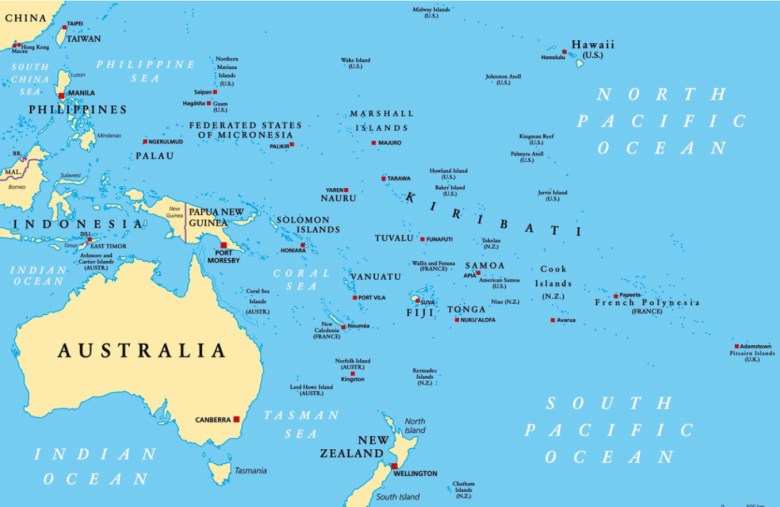
Australia considers the Solomon Islands as being in its backyard. Image: Wikimedia
Yet a parallel can be drawn to the ongoing Russia-Ukraine war, which was justified in Moscow by “legitimate security concerns” with respect to Ukraine, traditionally within the Russian sphere of influence, exercising its sovereignty to seek closer relations with the West.
Having sanctioned Russia and publicly sided with Ukraine, Australia and New Zealand risk appearing hypocritical if they attempt to undermine the Solomon Islands’ initiative with Beijing, legitimate security concerns notwithstanding.
If the security deal with China is indeed implemented, the Solomon Islands will become the PRC’s top partner in the South Pacific a mere three years since it switched recognition from Taipei to Beijing. This represents a sea change in the South Pacific and a significant shift in the regional balance of power, though Sogavare is insistent that neighbors have no reason to worry as Honiara will not “pick sides.”
The Solomon Islands, of course, was the sight of a major Allied counteroffensive against Imperial Japan in World War II, which left the country in ruin. Strategically important but economically impoverished, the Solomon Islands once against finds itself in the middle of dangerous great power politics at the outbreak of what some see as a new Cold War.
Nate Fischler, a graduate of the Johns Hopkins-Nanjing Center, is an independent Asia-based reporter focusing primarily on China and Vietnam. Follow him on Twitter at @NateFischler
Yet a parallel can be drawn to the ongoing Russia-Ukraine war, which was justified in Moscow by “legitimate security concerns” with respect to Ukraine, traditionally within the Russian sphere of influence, exercising its sovereignty to seek closer relations with the West.
Having sanctioned Russia and publicly sided with Ukraine, Australia and New Zealand risk appearing hypocritical if they attempt to undermine the Solomon Islands’ initiative with Beijing, legitimate security concerns notwithstanding.
If the security deal with China is indeed implemented, the Solomon Islands will become the PRC’s top partner in the South Pacific a mere three years since it switched recognition from Taipei to Beijing. This represents a sea change in the South Pacific and a significant shift in the regional balance of power, though Sogavare is insistent that neighbors have no reason to worry as Honiara will not “pick sides.”
The Solomon Islands, of course, was the sight of a major Allied counteroffensive against Imperial Japan in World War II, which left the country in ruin. Strategically important but economically impoverished, the Solomon Islands once against finds itself in the middle of dangerous great power politics at the outbreak of what some see as a new Cold War.
Nate Fischler, a graduate of the Johns Hopkins-Nanjing Center, is an independent Asia-based reporter focusing primarily on China and Vietnam. Follow him on Twitter at @NateFischler






 Polina Ivanova @polinaivanovvaAnnnd
Polina Ivanova @polinaivanovvaAnnnd